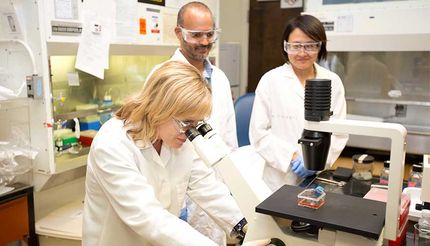New model finds HIV acute phase infectivity may be lower than previously estimated
Advertisement
Previous calculations may have overestimated the importance of HIV transmission from recently infected individuals ("acute phase infectivity") in driving HIV epidemics, according to an article published by Steve Bellan of The University of Texas at Austin, and colleagues in this week's PLOS Medicine.
The lower estimates of acute phase infectivity suggest that recently infected individuals - who have not had the chance to start antiretroviral treatment - although still more infectious on average than those in the chronic stage of infection, are not as likely to infect others as was previously thought. Transmission from individuals in the acute phase of HIV infection could therefore pose less of a threat to effectiveness of Treatment as Prevention programs, while programs aimed at early identification of HIV infection could have less of a population-level impact, than previously thought.
The authors used two approaches to estimate acute phase infectivity. The first approach used viral load trajectories and the known relationship between viral load and infectivity to estimate that additional risk of transmission during the acute phase was equivalent to 5.6 extra months of chronic-phase infectivity (5.6 excess hazard months or EHMacute). The second approach used a mathematical model to simulate HIV infection and transmission among couples in the principal prior study that directly measured acute phase infectivity, a cohort study from Rakai, Uganda. This simulation estimated EHMacute to be 8.4. Both approaches yielded EHMacute estimates well below the two most cited previous estimates of acute phase infectivity (EHMacute 31 and 141). Bellan and colleagues determined that the higher estimates in previous studies were mainly the result of unaccounted-for heterogeneity in risk among study couples, and bias due to the exclusion of serodiscordant couples who were lost to follow-up. The authors caution that, even in their updated estimates, the small number of couples in this study result in wide confidence intervals.
The authors say: "Our findings cautiously suggest that the population-level benefits [of ART] might be larger than predicted by earlier estimates."
In an accompanying Perspective on this Research Article, Laith Abu-Raddad of Weill Cornell Medical College, Qatar highlights the importance of understanding how large a role acute HIV infection plays in driving HIV transmission and the value of simulation studies for assessing bias in epidemiologic study design. He cautions that these estimates may not translate to key populations outside of the hyper-epidemics of Africa (such as men who have sex with men, people who inject drugs, female sex workers and their clients). However, he says: "Bellan and colleagues' study has shaken our faith in a result taken for granted for a decade."
Original publication
Bellan SE, Dushoff J, Galvani AP, Meyers LA; "Reassessment of HIV-1 Acute Phase Infectivity: Accounting for Heterogeneity and Study Design with Simulated Cohorts."; PLoS Med 12(3), 2015.
Abu-Raddad LJ; "Role of Acute HIV Infection in Driving HIV Transmission: Implications for HIV Treatment as Prevention."; PLoS Med 12(3), 2015.



























































